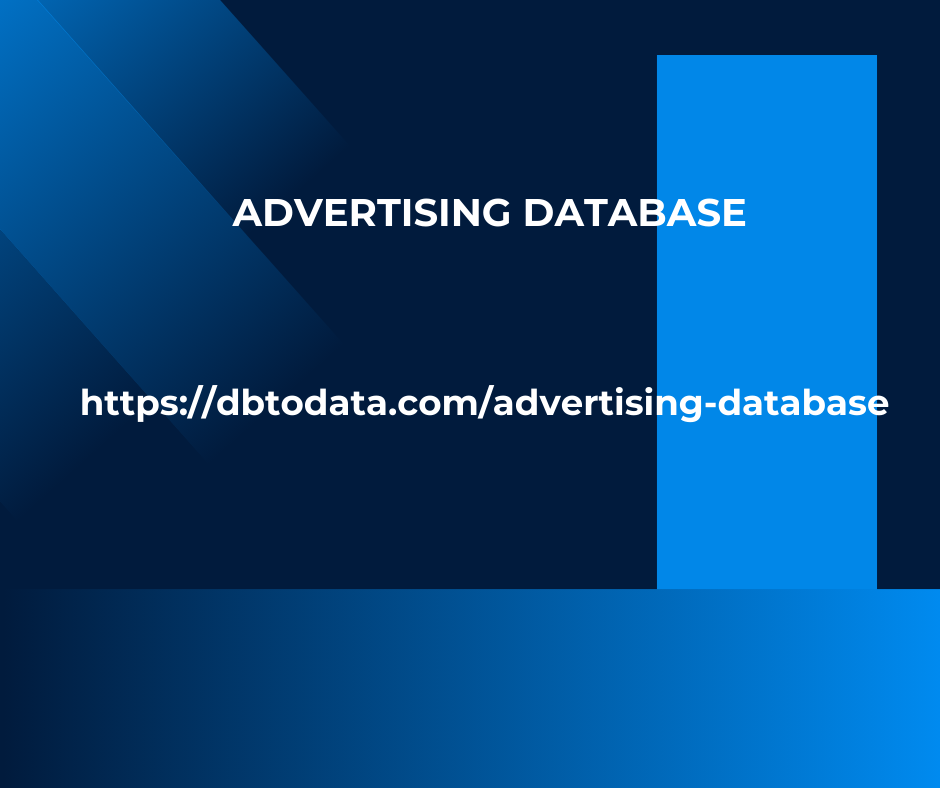However, for SaaS platforms, social networks, and clos communities, the lack of SEO isn’t a dealbreaker. SPAs communicate with servers through APIs, potentially exposing sensitive data to attacks. SPAs demand more logic and functionality on the client, leading to potentially complex and hefty codebases.
Adding to the challenge
SPAs ne to navigate the ever-evolving landscape of browser versions and features, which can create compatibility nightmares. OrbitSoft knows how to overcome such challenges: 1. If search engines ignore your SPA? Not cool. Server-side rendering (SSR) can help.
Your marketing campaigns can be advertising database completely changed by an advertising database, which provides in-depth information on target markets, ad performance, and rival tactics. It permits more accurate audience segmentation, tailored messaging, and increased return on investment. You may track outcomes, adjust campaigns, and optimize ad placements with the use of current data, which will increase productivity and help you achieve your marketing objectives.
It pre-renders initial HTML on the server, making your app both search-engine-friendly and lightning-fast on first load. 2. Want native-like functionality without the hassle of the App Store? Look no further than Progressive Web Apps (PWAs). They work offline, deliver push notifications and reside on the home screen, erasing the boundary between web and app. 3. , so security is paramount. Implement HTTPS, encrypt data, validate input/output, leverage secure APIs, and follow best practices for authentication, authorization, and compliance.
Client-side data nes protection too
Store it securely using local storage, cookies, or tokens. Web development tailor to business nes Our expertise includes online stores, portfolio sites, landing pages, and corporate web pages We employ cutting-ge technologies, building websites using Tilda, Bitrix, WordPress, Laravel, and developing web applications using PWA, HTML-5, and SPA technologies Creating a Single Page App in React Using React Router React is a popular tool for creating user interfaces. It helps developers build reusable components that can show different information bas on the app’s state.
However, React doesn’t handle website navigation on its own. That’s where you ne to use React Router. It serves as a library offering routing and navigation capabilities for React app. The library enables the creation of various pages or views corresponding to the URL path and facilitates their connection using components like
Link and Nav Link React
Router is an extra tool that helps how to promote an online store on instagram manage navigation in web applications, making it easier for users to move around without waiting for pages to reload. This can improve a company’s website performance. Craft your React SPA: A step-by-step guide Building a single page app in React using the React Router is a straightforward process that involves a number of important steps: 1.
After installation of React. 2. Build the React project. 3. Import necessary React libraries (use npm). 4. Set up and import React Route (use npm). 5. Import your part files into your main source app to create route maps. scheme2 6. Link every path to a specific route using the Route component. 7.
Run the following command — ‘export swb directory default’ for the components of the app to allow them to be import into other files. scheme3 Life Cycle of SPA The life cycle of a single-page application (SPA) consists of four key phases: design, development, deployment, and optimization. scheme4 Web design This step encompasses mapping out and creating the user interface, the structure, and the features of the single page application.
It involves taking into account
User nes, business objectives, and the technical criteria of the application. Also, this phase includes building prototypes, conducting tests, and affirming the concept and features of the single page application. Development This stage entails writing and putting into action the single page application using the select technologies and frameworks.
During development, it’s important to adhere to web development best practices and standards, such as breaking the code into modules, creating components, and documenting the process. Testing, identifying and resolving issues, and evaluating the functionality of the single page application are also key aspects of the development phase.
Deployment
This step encompasses rolling out and initiating the single page application in the intend environment, like a web server or hosting service. It’s essential during this phase to guarantee the accessibility, security, and reliability of the single page application for the end users. This phase also involves keeping an eye on, recording, and identifying and solving any performance or operational problems of the single page application.
Optimization
This stage entails refining and enhancing the single page application bas on user feback, analytics data, and current market trends. The goal of the optimization phase is to elevate the user experience, functionality, and overall quality of the single page application. It also involves updating, sustaining, and expanding the single page application. The life cycle of a single page application is not a rigid or straightforward process, but instead an adaptable and iterative approach that responds to the evolving nes and expectations of users and the business.
It demands ongoing communication
And collaboration among stakeholders, including developers, designers, managers, and users. Continuous learning and innovation are also vital to remain current with ever-changing web technologies and standards. State Management in React SPA Effective state management is essential in single-page application (SPA) development with React.
It encompasses data that dictates the appearance and behavior of the user interface, unique to a component, shar across multiple components, or deriv from other states or external sources such as APIs or databases. Proficient state management significantly impacts SPA


